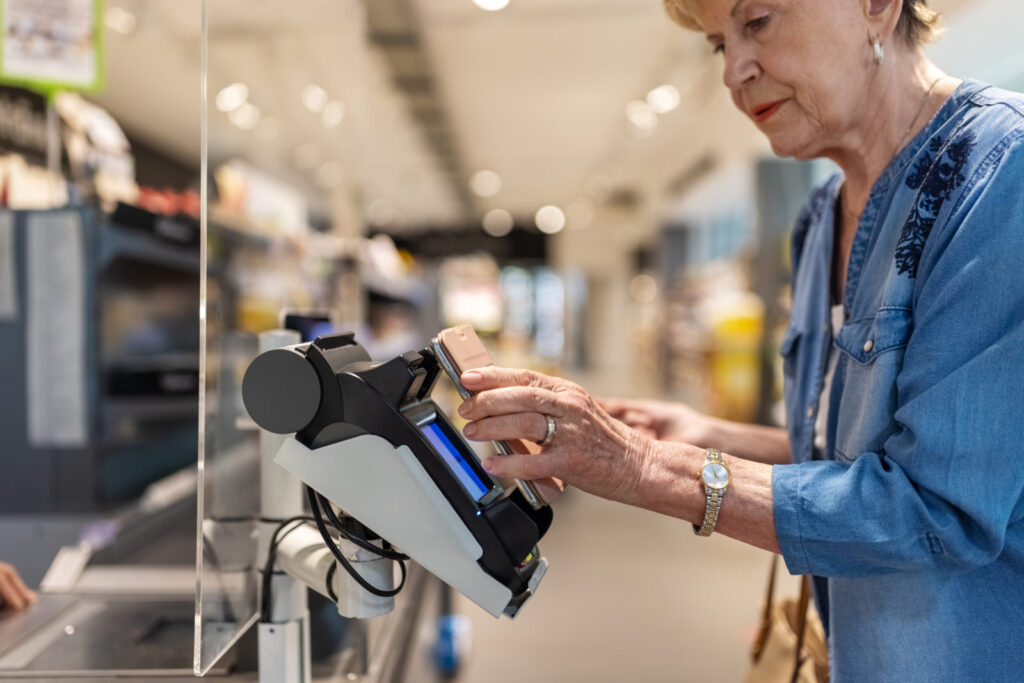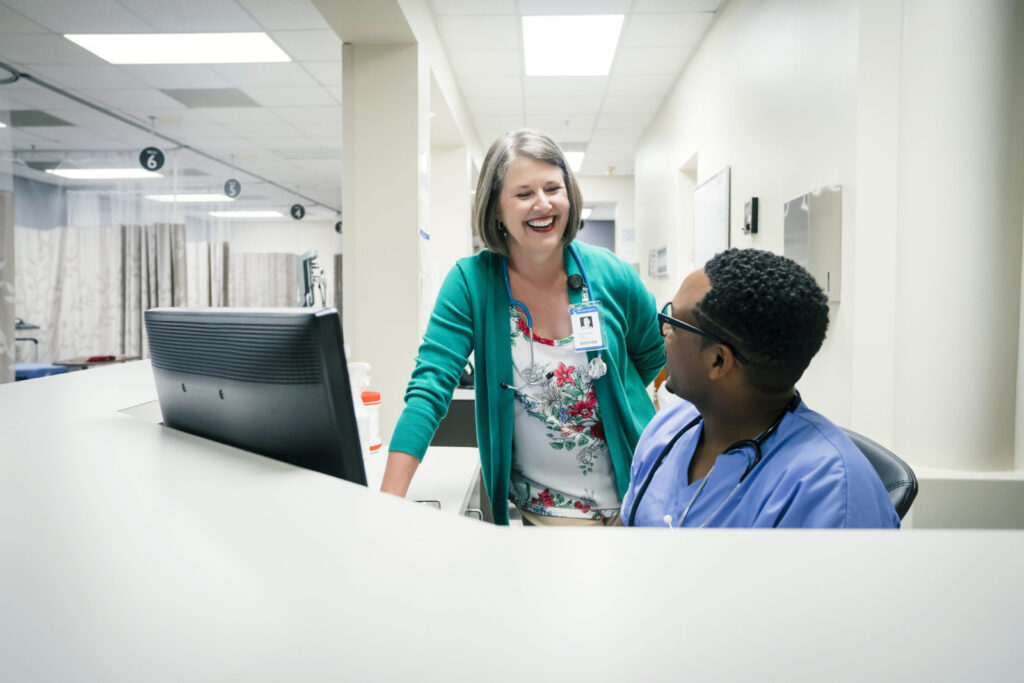
Will over-the-counter hearing aids usher in a new era of OTC healthcare products and services? Health economist Jane Sarasohn-Kahn explores the possibilities and challenges.
By Jane Sarasohn-Kahn, MA, MHSA
Earlier this month, the Food and Drug Administration (FDA) approved final regulations for hearing aids to go over-the-counter (OTC) in October 2022.
This announcement poses a question: Will OTC hearing aids usher in a new era of OTC healthcare products and services?
It’s a good question at a propitious time: After all, the COVID-19 pandemic accelerated many peoples’ self-care interests and actions, from adopting wearable technologies for health and fitness to initiating telehealth visits with their own physicians and mental health providers. Consumer demand for DIY, direct-to-patient solutions is evident across many types of personal healthcare workflows.
But the question of moving more “over-the-counter” has a complicated answer. To answer, we have to start with the regulatory framework for moving medical goods and services from “behind the counter” to “over” it.
Cost and Access: Rationale for Going OTC
The wheels of healthcare law move slowly. For instance, it took five years from the time OTC hearing aids were “legalized” for the final rules to be published. This enables OTC hearing aids to go live in the consumer-facing market on October 17, 2022.
When the Over-the-Counter Hearing Aid Act was passed in 2017, it sought to address the high cost of the product and other access barriers facing hearing-challenged individuals wanting to bolster their hearing health. Cost has indeed been an access pain-point: A pair of prescription hearing aids costs an average of $5,000. The cost for OTC hearing aids will run $300 to $600 per device, the American Academy of Audiology estimated.
The final FDA rule established a new regulatory category for OTC hearing aids, formally defining the product and establishing the labeling for them—with the objective of ensuring safety, supporting innovation and protecting public health.
The AARP, advocating for members ages 50 and older, welcomed the FDA announcement. So, too, did Consumer Reports, chiming in agreement with AARP calling out “years of consumer anticipation” expecting hearing aids to be less expensive and easier to purchase.
The Regulatory Road of Moving OTC
Consider the regulatory pathway to going over-the-counter: When it comes to medical devices, the FDA explains, “OTC medical devices may be used in any setting where the consumer can properly use the device as directed by the product labeling. For instance, the device may be used outside the home in an office, school, hospital, ambulatory surgical center, nursing home, outpatient treatment facility, or other healthcare facility.”
Thus, labeling is a key aspect of ensuring the consumer-as-patient can self-diagnose their condition, self-manage it and make a sound selection of the product to help manage that condition. To go OTC, that label and product must be understandable and usable “without any help from a healthcare provider,” according to the FDA.
Furthermore, safety is paramount: The accessibility of the product going OTC must show the benefits of availability outweigh the risks.
Some examples of previously prescribed “behind-the-counter” medical goods include self-monitoring blood glucose test systems in 2020, latex condoms in 1998, and menstrual tampons in 2005 (which looked at enhancements to existing products (e.g., scents, applicators, and other design changes).
As these and other products have moved to the front of the pharmacy and health-and-beauty aisles in grocery stores (and on Amazon and ecommerce retail channels), consumers’ self-care “chops” are growing. Patients-as-consumers are learning to read and understand labels, access helpful educational videos online that demonstrate the use of products, and share experiences with each other on social networks in a growing community for peer-to-peer healthcare.
Cost and Access Driving the Growth of Retail Health
We have been witnessing an accelerated pace of technology and consumer goods channels moving faster toward a direct-to-consumer model for goods and services, expanding the retail health ecosystem. “Retail health” was traditionally defined as “the pharmacy.”
As patients have been facing growing out-of-pocket spending for deductibles, out-of-pocket costs and coinsurance, the household’s healthcare expenses have taken on the flavor of retail spending competing with other budget line items like food, housing, utilities and energy, and in the current inflationary period, filling the car’s gas tank.
We know that the cost of hearing aids at $5,000 for a pair has prevented many people from being able to access them; even with a doctor’s prescription for them, those consumers have opted out of filling that prescription.
Opting out of filling an Rx is also referred to as “prescription abandonment” in pharma-speak. It is akin to a form of self-rationing medical care due to cost, a phenomenon which continues to prevent at least 1 in 4 U.S. health consumers from accessing necessary treatment.
The advent of the New Retail Health suggests that more products and services might move to the “front of the counter” or “off the shelf” (whether brick-and-mortar aisle or a virtual shelf online) that is more accessible and available to patients-as-consumers.
Thinking Ecosystem-wide, Beyond the Box or the Pill
This year, we have witnessed an acceleration of technology companies, retailers and Amazon.
[To that point, in 2011, Amazon’s CTO Werner Vogels said, “Amazon is a technology company. We just happen to do retail.”]
Eleven years later, we see Amazon acquiring the digitally-enabled provider group One Medical in July, and is currently in a bidding competition to acquire Signify Health, a home care organization which has also attracted the potential investment by CVS Health and United Healthcare, among other large healthcare organizations.
Returning to OTC hearing aids, it’s a story of cost and access, and being relevant in peoples’ lives and quality of life. In 2016, Aflac surveyed U.S. consumers asking people what they would like their health insurance buying experience to feel like. Half of the people said, “like Amazon.”
That was several years before millions of new Prime members joined Amazon to supply their pandemic pantries (as well as stream movies from home) in 2020 and onward.
With Amazon growing its healthcare footprint and expertise as a healthcare competitor and not simply “disruptor” in the lens of Chartis’s report, health systems have the opportunity to move more care directly to consumers at home and closer-to-home.
Signify Health’s branding language is, “Bringing health homeward. … We believe healthcare should be value-based and meet people where they are. That’s why every day we work to increase healthy, happy days at home.”
That’s a storyline that resonates in the post-pandemic consumer-facing retail health world.
Serving that level of personalized healthcare that meets people “at home” will require collaborating across not only healthcare segments like health plans and pharma, but with consumer-facing companies as well.
There is fresh advice to inform this kind of strategy in an August 2022 report from McKinsey on overcoming the cost of healthcare transformation through partnerships. While not every health system has an Amazon-sized budget to acquire virtually any company in their sights, other tactics beyond M&A can help to foster digital transformation. Consider, for example, joint ventures with organizations that extend healthcare services to provide a full continuum of care from home and work to hospital and rehab and back home again from hospital. In this scenario, partnering with a med-tech company that can support hospital-to-home migration and care management can add value to the plan.
Another collaboration in this retail health/DTC ecosystem are alliances with companies that have important data to complement health systems’ traditional claims and EHR data sources. Ponder the opportunity to work with innovators in wearable tech for fitness and health, remote health monitors like blood pressure devices used at home, and nutrition tracking apps and tools supporting peoples’ healthy eating and food choices. These arrangements can add value and real-world insights to providers’ information sets to bolster diagnostic accuracy as well as personalization. But they also require strong governance models, especially with respect to being responsible, trusted data stewards in the eyes of patients.
A Page From the Consumer Electronics Playbook
Let’s take one more lesson from the OTC hearing aid story. Hearing loss ranks among the most prevalent and undertreated disabilities the world over, with 1 in 8 people in the U.S.—and 2 in 3 people over 70 years of age—dealing with some level of hearing loss.
The New York Times’ coverage of the new FDA OTC hearing aid rules included an interview with a consumer named John Prouty who, at the age of 65, had been recently diagnosed with some hearing loss.
“He said he was not ready for hearing aids and felt even less so after finding out the devices would cost up to $8,400 for a pair and services,” the Times story explained. “Mr. Prouty welcomed the new [FDA] policy, saying he hoped it would encourage the kind of consumer electronic advances that had revolutionized phones and watches. ‘I’m looking forward to this,’” Mr. Prouty told the reporter.
Mr. Prouty’s response—that the new FDA rule could inspire more well-designed “electronic advances” he had seen in phones and watches—reflects health consumers’ growing awareness of and demand for more engaging health services on peoples’ own terms and turf, SP Global discussed in a recent report on consumer-driven health monitoring.
We’ll be watching this space for more inspiration and evidence to support growing efforts for transforming health and care. As SP Global suggested, there is an opportunity for doctors to prescribe devices to patients if device-makers establish the necessary relationships with healthcare providers and insurers.



About The Author: Jane Sarasohn-Kahn, MA, MHSA
Through the lens of a health economist, Jane defines health broadly, working with organizations at the intersection of consumers, technology, health and healthcare. For over two decades, Jane has advised every industry that touches health including providers, payers, technology, pharmaceutical and life science, consumer goods, food, foundations and public sector.
More posts by Jane Sarasohn-Kahn, MA, MHSA